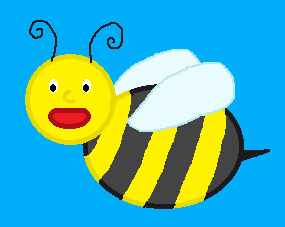Honey bees are winged insects known for their tasty honey. They have an identifiable color pattern, defined by bands of black and yellow or orange stripes on their stomach. This color serves as a warning sign to predators, informing predators about their power to prevent themselves with a painful sting. However, some honey bees have a different color like the Italian honey bee, which has a more golden hue. Honey bees measure about 12 to 15 millimeters in length.
The best honey bee is the western honey bee, scientifically known as Apis mellifera which is tamed for making honey and pollinating plants. The second and only other tamed bee is the eastern honey bee, scientifically called Apis cerena which lives is South, Southeast, and East Asia. The members of the genus Apis are the only real honey bees, though, some other types of bees can also produce honey and were kept by humans for that purpose. Now, humans are using beeswax in making candles, soap, lip balms, and cosmetics.
The genus Apis got its name after the Latin word meaning “bee”. New dictionaries may refer to Apis as honey bees or honeybees but enthomologist Robert Snodgrass insists that the correct usage is with two words because it is a type of bee. So, it is incorrect to stick the two words together like in “dragonfly” and “butterfly”.
Honey bees’ origin is South and Southeast Asia including the Philippines and all the living species except the Apis mellifera are from that region. The first Apis bees appeared in the fossil record at the Eocene-Oligocene boundary in European deposits. The origin of these honey bees doesn’t point Europe as the place of origin of this genus, it only points that the bees were seen in Europe at that time. Only a few fossil deposits are known from South Asia and fewer have been exhaustively studied.
A colony of honey bees consists of a queen bee, thousand drone bees, and ten thousands of female worker bees. Eggs are laid individually in a cell in a wax honeycomb, which is produced and shaped by the worker bees. Using her supermatheca, the queen bee can select to fertilize the egg which she is laying usually depending on the cell she is laying her eggs into. Nurse bees clean the hive and feed the larvae. Queens don’t mate with drones from their colony. So, they go on mating flights to the drone congregation area and mate with multiple drones before returning home.
Honey bees gather nectar from flowers with their lengthy tongues. They keep the nectar in their honey stomachs and when they fill them, they fly back home and regurgitate the nectar into the mouths of the other bees. They pass the nectar from the mouth of one bee to the other to add enzymes each time. Then, they keep the nectar in the honeycomb cells and fan their wings to vaporize some of the water in the nectar, making it thicker.
To breed honey bees, you’ll need a queen bee because she is the boss of the hive and takes the responsibility of laying eggs. She must be very healthy and strong to produce healthy bees. A queen bee is not the only bee you’ll need. You’ll also need some worker bees to help the queen care for the eggs and young bees. After time passes, the queen bee will lay eggs and the workers will take care of them. Then, they’ll grow up to become worker or drone bees.
Honey bees are endangered because of pesticide usage and loss of habitat. We must protect them. One way is to plant flowers which they like visiting like lavender, sunflowers, and wildflowers. Planting flowers gives the bees a place to rest and sleep. However, this isn’t the only thing you can do. You must always avoid using pesticides in your gardens as using them could cause extreme harm to the bees and may even kill them. So, avoid using pesticides to keep the honey bees safe and eat honey, else, you won’t have tasty honey to eat
Honey bees may look little and immaterial, but the reality is that they play a gigantic role in our world and we really need them. Without them, we wouldn’t find lots of yummy food and honey to eat. They are great pollinators and fly from flower to flower, collecting nectar while transferring pollen from flower to flower. The pollination is important for the growth and survival of the plants or crops. This is one example of how honey bees help and what makes them important to people. They are really important for us.
Pollination is not the only thing honey bees do, however. They make honey, our favorite sweet food, which we eat by spreading it on bread like jam, mixing it into foods like yogurt or other things that need sweeteners, or sweetening tea or coffee. So, we must thank the bees and keep them safe.


